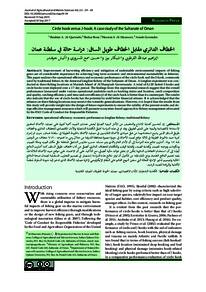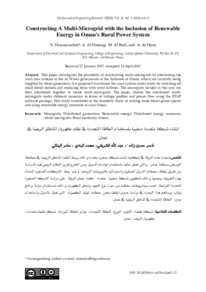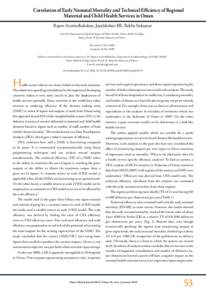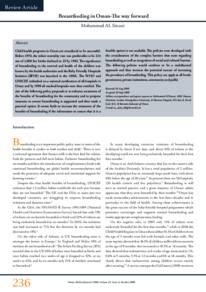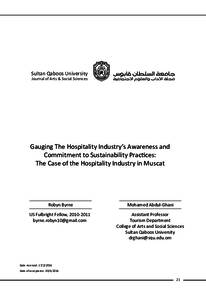وثيقة
Circle hook versus J-hook: A case study of the Sultanate of Oman.
المساهمون
الناشر
جامعة السلطان قابوس. كلية العلوم الزراعية والبحرية
ميلادي
2018
اللغة
الأنجليزية
الموضوع
الملخص الإنجليزي
Improvement of harvesting efficiency and mitigation of undesirable environmental impacts of fishing gears are of considerable importance for achieving long term economic and environmental sustainability in fisheries. This paper analyses the operational efficiency and economic performance of the circle hook and the J-hook, commonly used by traditional fishers in the demersal longline fishery of the Sultanate of Oman. A longline experiment was conducted at three fishing locations at Masirah Island of Al-Sharqiyah Governorate. A total of 6,120 baited J-hooks and circle hooks were deployed over a 17-day period. The findings from this experimental research suggest that the overall performance (measured under various operational yardsticks such as hooking status and location, catch composition and quality, catching efficiency, and time and cost efficiency) of the circle hook is better than its counterpart. The results also indicate that the use of circle hooks has the potential to yield better financial returns. It is acknowledged that the reliance on three fishing locations may restrict the scientific generalizations. However, it is hoped that the results from this study will provide insight into the design of future experiments to ensure the validity of the present results and design effective management measures which will promote ecosystem-based approach to fishery management advocated by the FAO Code of Conduct for Responsible Fisheries.
المجموعة
ISSN
2410-1079
URL المصدر
zcustom_txt_2
Al-Qartoubi, I. A., Bose, Sh., Al-Masroori, H. S., & Govender, A. (2018).Circle hook versus J-hook: A case study of the Sultanate of Oman. Agricultural and Marian Sciences Journal, 23 (1), 29-39.
الملخص العربي
إن لتحسين كفاءة الإنتاج والتخفيف من الآثار البيئية الضارة لبعض معدات الصيد أهمية كبيرة على مصايد الأسماك لتحقيق الاستدامة الاقتصادية والبيئية على المدى الطويل، وقد تم في هذه الدراسة تحليل الكفاءة التشغيلية والأداء الاقتصادي للخطاف الدائري والخطاف طويل الساق الذين يشيع استخدامهما من قبل صيادي الأسماك التقليدين في مصايد الأسماك بالخيوط الطويلة في سلطنة عمان، حيث تم إجراء تجربة صيد بالخيوط الطويلة في ثلاثة مواقع لصيد الأسماك في جزيرة مصيرة بمحافظة الشرقية من خلال رمي ما مجموعه 6120 خطاف من النوعين لمدة 17 يومًا. أشارت نتائج هذه الدراسة إلى أن الأداء العام (الذي يتم حسابه حسب مقاييس التشغيل المختلفة مثل مكان الصيد وحالة المصيد، ومكونات ونوعية المصيد، وكفاءة الصيد، وكفاءة الوقت والتكلفة) للخطاف الدائري أفضل من أداء الخطاف طويل الساق، كما أشارت النتائج أيضًا إلى أن استخدام الخطافات الدائرية يمكن أن يحقق عوائد مالية أفضل، مع التأكيد على أن الاعتماد على مواقع صيد الأسماك الثلاثة قد يقيد تعميم النتائج العلمية، ومع ذلك فإنه من المأمول أن توفر نتائج هذه الدراسة استبصار في تصميم التجارب المستقبلية لضمان صحة النتائج الحالية وتصميم تدابير الإدارة الفعالة التي ستعزز النهج القائم على النظام الإيكولوجي لإدارة مصايد الأسماك الذي تدعو إليه مدونة السلوك لمنظمة الأغذية والزراعة للصيد الرشيد.
قالب العنصر
مقالات الدوريات

